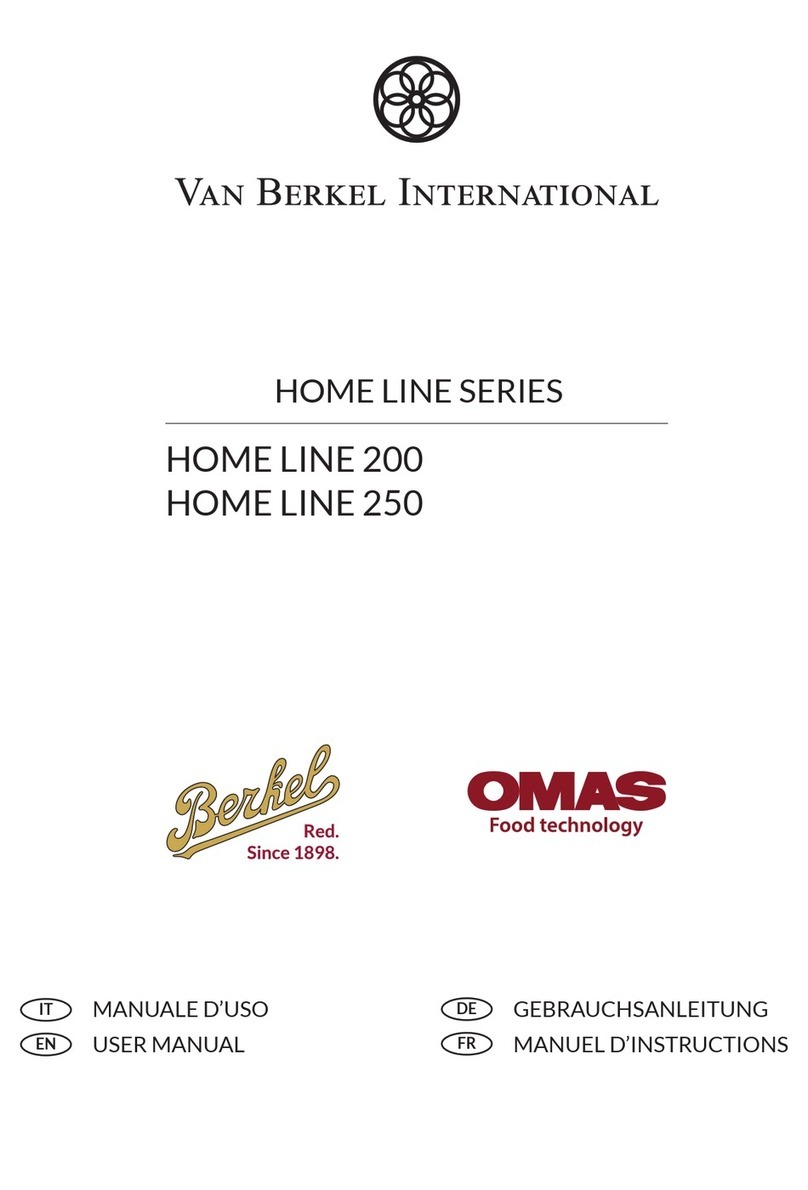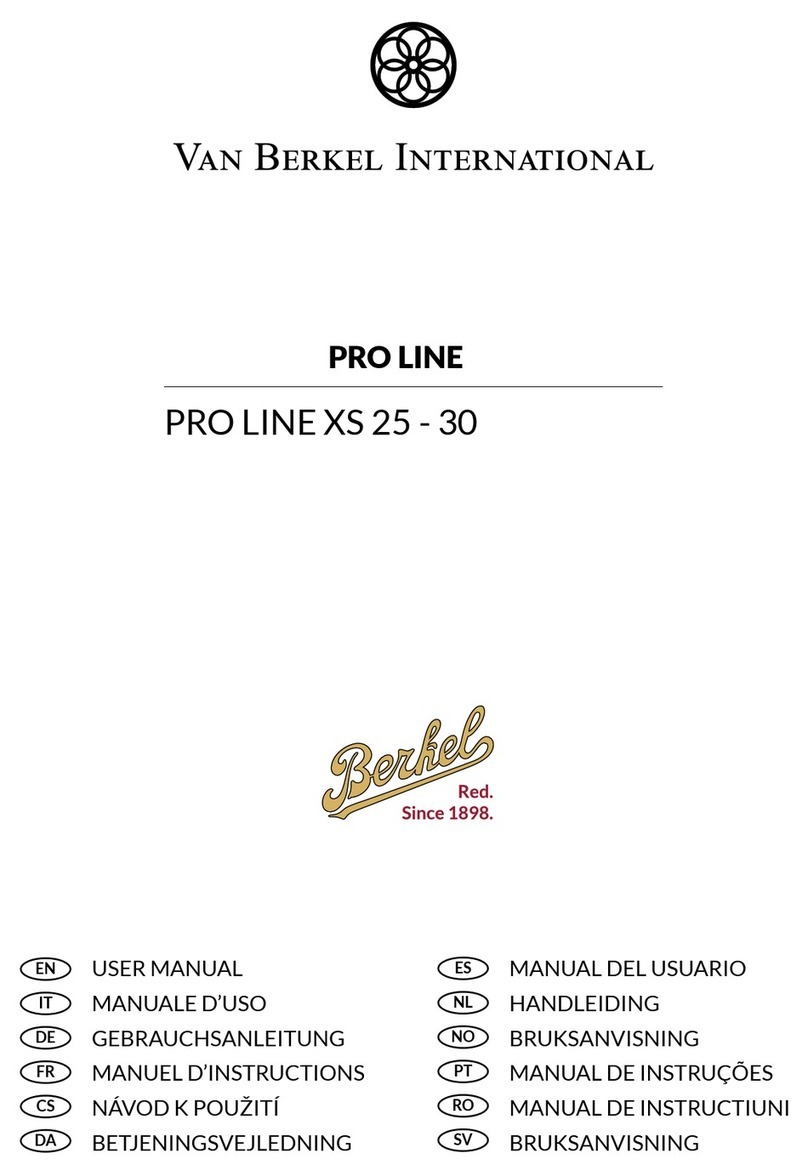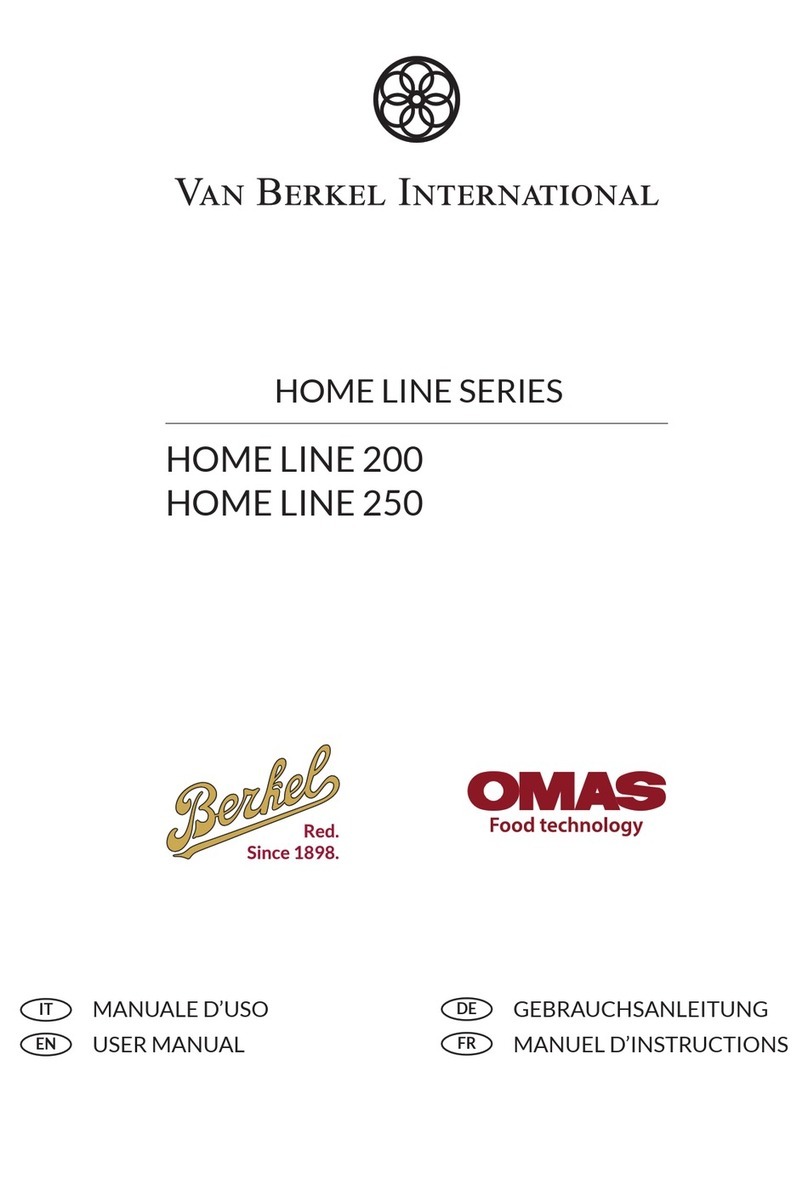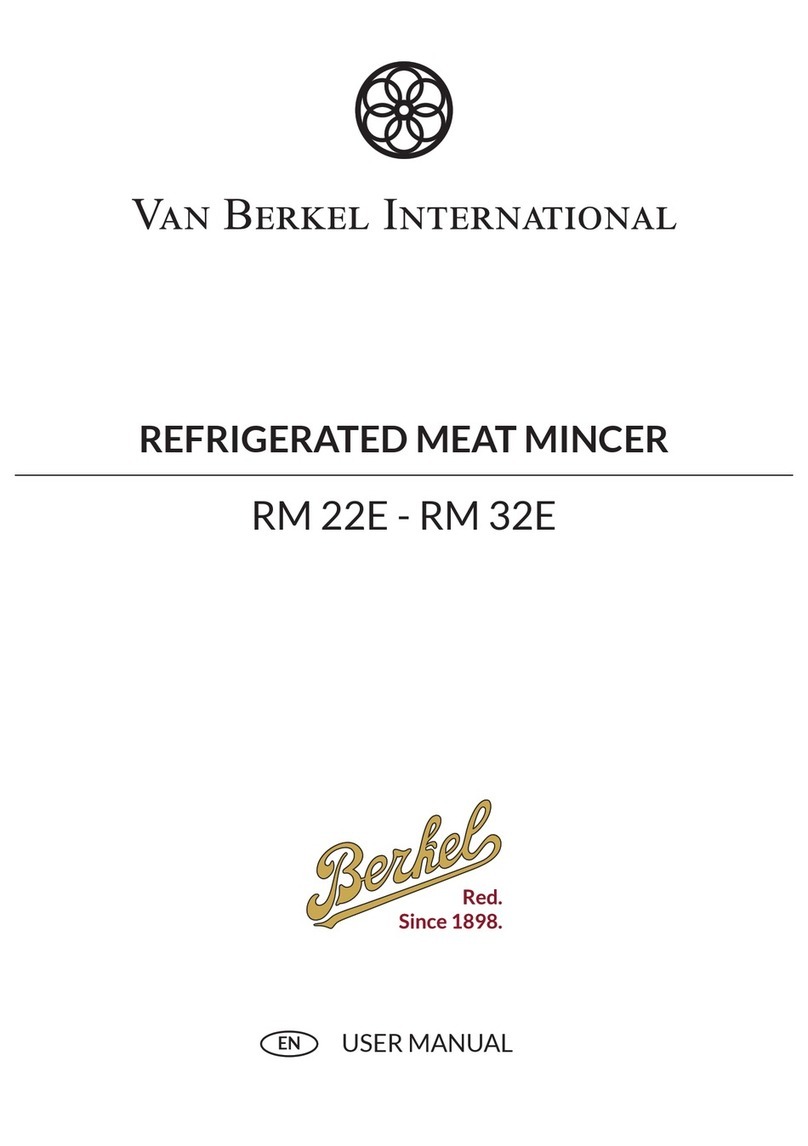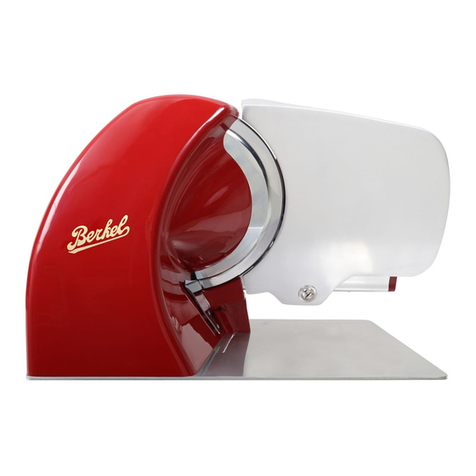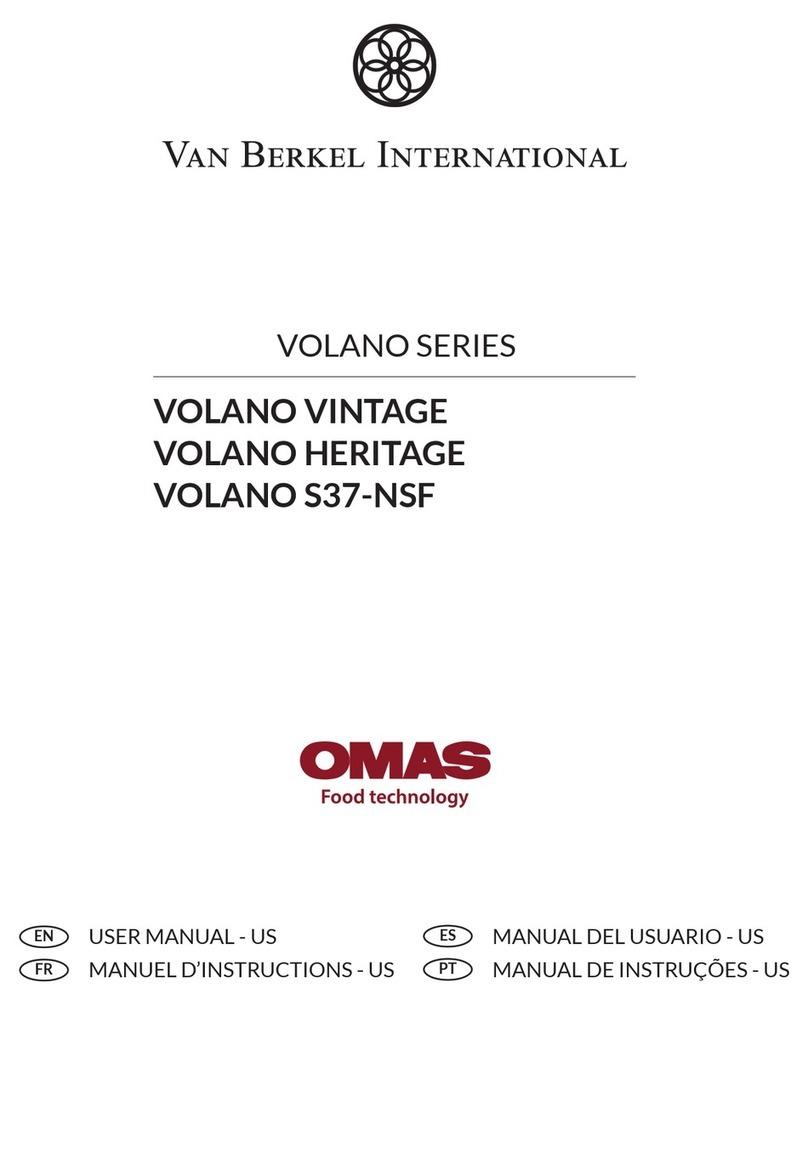
6
DESCRIPTION
Flywheel slicer machine,
equipped with a circular blade,
suitable for cutting only the
food products of the types and
within the dimensional limits
indicated in this manual. The
main parts of the machine are
shown in the general compo-
nent diagram reported in pic-
ture 2. Electrical diagrams are
reported in picture 1.
DECLARATION
OF CONFORMITY
The machines described in this
manual comply with Direc-
tives 2006/42/CE, 2006/95/
CE, 2004/108/CE, 2003/108/
CE, 2011/65/CE, Regulation
(EC) 1935/2004 and related
harmonized standards as EN
1974:1998 +A1, EN60204-1,
EN60335-1, EN60335-2-64.
SAFETY
The machines described in this
manual comply with the latest
European hygiene and safety
standards.
Pay attention to the following
basic safety precautions:
- read all the instructions be-
fore using the machine;
- this product is not intended
to be used by children;
- operate the machine only if
properly trained and in perfect
psycho-physical conditions;
- do not use the machine in any
way other than what indicated
in this manual;
- use the machines only in full
structural, mechanical and sys-
tem efciency;
- install the machine in con-
formity to the instructions
indicated in the “Installation”
section;
- install the machine in a loca-
tion out of the reach of person-
nel unauthorized to operate it
and especially out of the reach
of minors;
- stay highlyconcentratedwhen
using the machine and avoid any
distraction during use;
- do not allow the machine to
be used by others who have
not read and fully understood
the content of this manual;
- do not wear baggy clothing or
clothing with open sleeves;
- do not allow anyone else,
other than the operator, to ap-
proach during product cutting
operations;
- do not remove, cover or
modify the tags located on the
machine body and, in case of
damage of these, replace them
promptly;
- do not remove, modify or
bypass any mechanical protec-
tive devices;
- slice only the permitted prod-
ucts, do not attempt cuts on
prohibited type products;
- always keep clean and dry the
sliced product resting surface,
the work area all around the
machine and the operator oor
area;
- do not use the machine as
a resting surface and do not
place any objects on it other
than food used for cutting op-
erations;
- do not use the slicer when,
due to normal wear, the dis-
tance between the edge of
the blade and the blade guard
ring exceeds 6 mm. In this case,
contact the manufacturer or
one of the Authorized Service
Centers to change the blade;
- do not use the machine with
temporary or non-insulated
cables, power strips or exten-
sion cords;
- periodically check the condi-
tion of the power supply cord
on the machine body. When
necessary, have qualied per-
sonnel replacing it;
- immediately stop the ma-
chine in the event of a defect,
abnormal operation, suspicion
of breakdown, incorrect move-
ment, unusual noises;
- before cleaning or carrying
out maintenance, disconnect
the machine from the electri-
cal supply;
- immediately stop the ma-
chine in the event of a defect,
abnormal operation, suspicion
of breakdown, incorrect move-
ment, unusual noises;
- use protective gloves for
cleaning and maintenance op-
erations;
- place and remove the goods
to be sliced on the sliding plate
only with the carriage com-
pletely pulled back and put the
blade protection in safety posi-
tion;
- for movement of the meat
table during cutting operations
use only the ywheel;
- never put your hands on the
food product while slicing. Al-
ways keep your hands far from
the blade;
- use of cutting accessories
which were not provided by
the manufacturer with the ma-
chine is prohibited.
The manufacturer declines any
responsibility coming from in-
appropriate use, modications
and/or repairs carried out by
the user or unauthorized per-
sonnel, use of replacement
parts, which are not original
or not specic for the machine
model.
Operating conditions:
- Temperature from -5°C to
